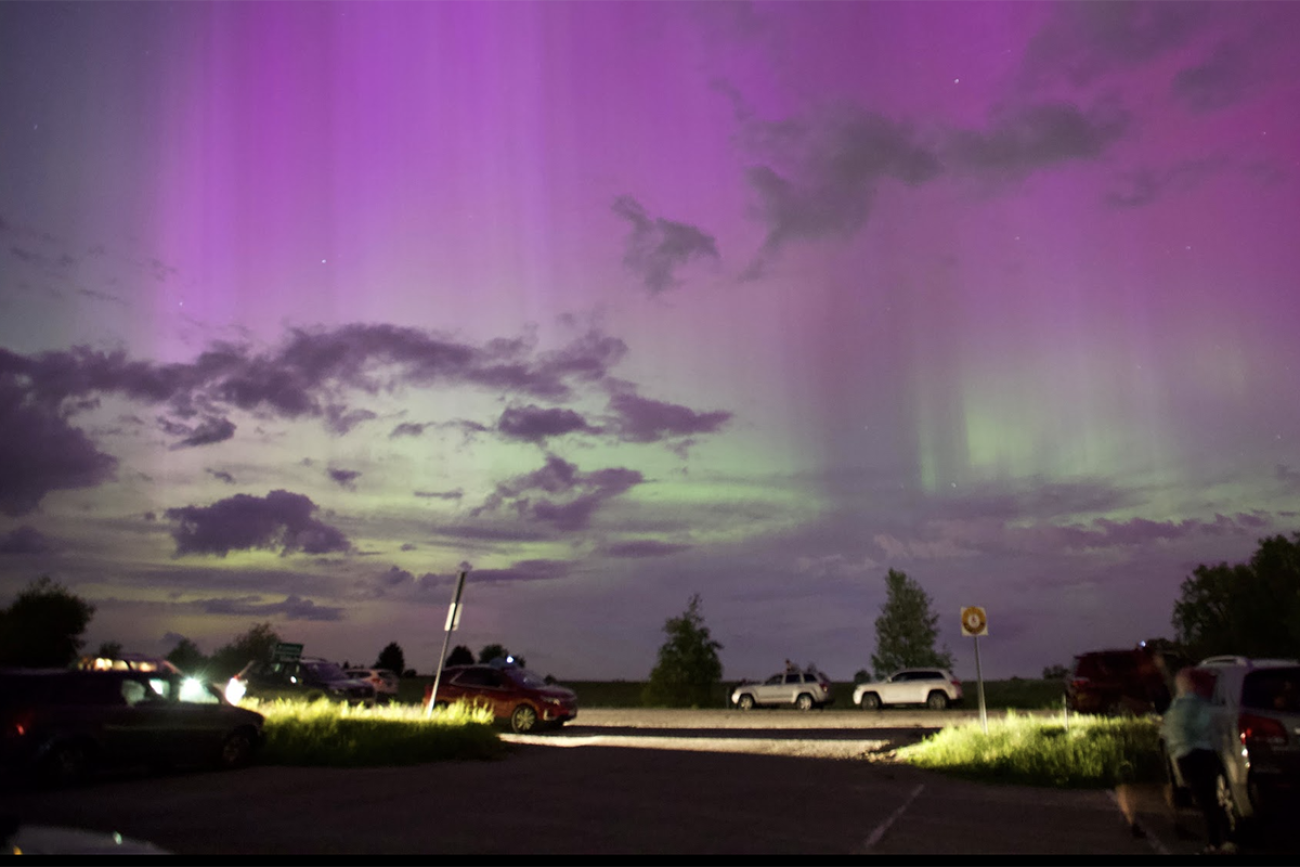Solar storm may make northern lights visible in Michigan again

- Residents in northern Michigan and the Upper Peninsula may be able to catch the northern lights again this week
- A strong geomagnetic storm caused by coronal mass ejection from the sun can make the show visible in parts of the Midwest and northern U.S.
- The light show displays an array of bright colors
Michiganders will have a chance to view the northern lights once again this week, but don’t get your hopes up — the phenomenon won’t be nearly as widely visible as it was in May, when residents as far south as Detroit saw the light show.
Michigan residents as far south as Bay City may be able to catch the northern lights this week.
However, residents should check the weather forecast before heading out to see the phenomenon. There is some cloud coverage expected late Tuesday night into Wednesday morning especially in northern lower Michigan, according to John Boris, a meteorologist for the National Weather Service Gaylord office. Cloud coverage will slightly improve Wednesday night, he added.
The National Oceanic and Atmospheric Administration issued a series of geomagnetic storm watches Monday after a coronal mass ejection erupted over the weekend.
Related: Severe solar storm will make northern lights visible in Michigan
The storm watches range from G1, which is less strong, to G3 which can be more severe. Geomagnetic storms are measured on a scale ranging from G1 to G5.
In an update Monday morning, NOAA’s Space Weather Prediction Center said the impacts of the CME could arrive as early as Monday night, making the northern lights visible in some lower Midwest states to Oregon.
The NOAA’s forecast suggests that peak activity is expected on Tuesday night when the light show will be visible in northern lower Michigan and the Upper Peninsula.
Geomagnetic storms are major disturbances in the Earth’s magnetosphere caused by energy from solar winds. Severe storms can occur after a coronal mass ejection or CME, when the sun expels tons of plasma and magnetic fields.
These CMEs travel at a million miles per hour. Once they reach Earth’s magnetic field, they create geomagnetic storms. The end result is the northern lights.
Also known as aurora borealis, they produce an ethereal light show that is typically limited to regions a bit closer to the northern pole. But geomagnetic storms can cause the lights to be seen in places closer to the equator, depending on the intensity of the storm.
The northern lights are most visible in the night sky, so optimal hours for viewing them are between 11 p.m. and 2 a.m., Dahl said.
“The moon is waning substantially so it doesn’t even come up until after midnight,” which provides residents with a great opportunity to see the aurora, he added.
Its high northern latitudes and its unobstructed view from the southern coast of Lake Superior make the Upper Peninsula one of the best places in the U.S. mainland to catch aurora borealis.
See what new members are saying about why they donated to Bridge Michigan:
- “In order for this information to be accurate and unbiased it must be underwritten by its readers, not by special interests.” - Larry S.
- “Not many other media sources report on the topics Bridge does.” - Susan B.
- “Your journalism is outstanding and rare these days.” - Mark S.
If you want to ensure the future of nonpartisan, nonprofit Michigan journalism, please become a member today. You, too, will be asked why you donated and maybe we'll feature your quote next time!




